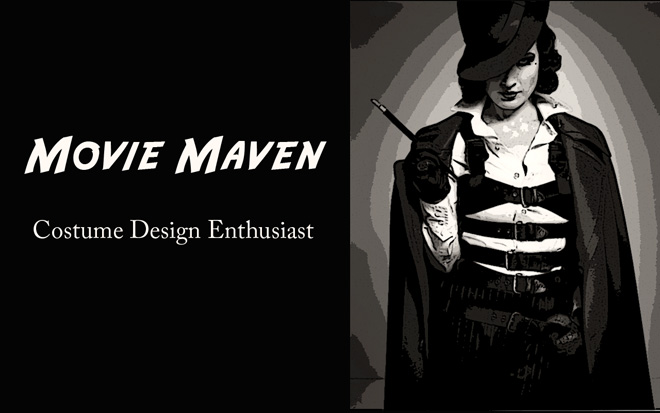What the character wears, how they wear it, how they dress throughout are important principles in explaining him or her and his or her persona. One very important method in costuming (be it stage or screen) is the use of COLOR.
Remember your earliest introduction to color when you were in school? An Art teacher/professor will always being an art class with color; how simple and how complex. Primary Colors are Red, Blue and Yellow. Secondary Colors are Violet/Purple, Green and Orange. Complimentary colors, Tertiary colors, the warm and cool colors and so on and so forth so that you understand just how elemental color is (and you'll realize its not just in art but in everything).
Color, like costuming itself, is a sort of inconspicuous and conspicuous tool.
When you are watching a film you may or may not notice that as the character (or characters) journeys through the film their wardrobe might change as well. Depending on the conflict of the person (or persons in the film) their way of dressing will follow him or her. But that does not mean it would be very obvious, it could be the slightest of changes. Always remember that who they are will be represented in how they speak, how they behave and yes, even how they dress.
For instance in the movie Christine, Keith Gordon's character is introduced as a school nerd who after purchasing a 1958 Plymouth Fury becomes possessed by it causing him to go from weak and passive to a more rebellious character (reflecting the time period of the car).
After reading over the book, actor Keith Gordon (Arnie) and the costume designer came up with a visual way to show Arnie being possessed by Christine. As the movie progresses, Arnie begins to wear clothes that reflect the era of Christine's make. At various points, especially when Arnie is yelling at Leigh on the phone, Arnie is seen wearing button up shirts open with black t-shirts, black pants, and boots like a 1950's "greaser". When he's talking to Junkins (both times), he's wearing a leather vest over a button up shirt (a nod to western TV shows which were popular in the 50's), and he even starts to wear a red suede jacket like James Dean in Rebel Without a Cause
(1955). - movie article on IMDB
This is a perfect example of SYMBOLISM.
As is defined in any English dictionary symbolism is:
The practice of representing things by means of symbols or of attributing symbolic meanings or significance to objects, events, or relationships.
In Christine, the main character's (Arnie) wardrobe shifts from early 1980's high school student to a rebellious teen/Greaser from the 1950's. As he is possessed by Christine/the 1958 Plymouth Fury the clothing he dons is symbolic of both his change in attitude (from mousy school nerd to free-spirited, independent and punkish Greaser) and Christine herself. He is becoming her; inheriting her passion and aggression. And it is through color that we can see how Christine and Keith are tied; in some of the later scenes is wearing a red suede jacket; a clear reference to James Dean's iconic role in Rebel Without a Cause and Christine's color.
There are many examples of this in today's film and theatre industries. Many abstract stage productions might dress their actors only black and white, strong and soft colors, eccentric patterns, etc, in order to push the envelope and better express either the mood, the story, the characters, relationships or philosophies of the production.
Symbolism and Color go hand in hand.
I will make sure to show more examples of this exercise in design as well as others more specifically in relation to film as I blog.








No comments:
Post a Comment